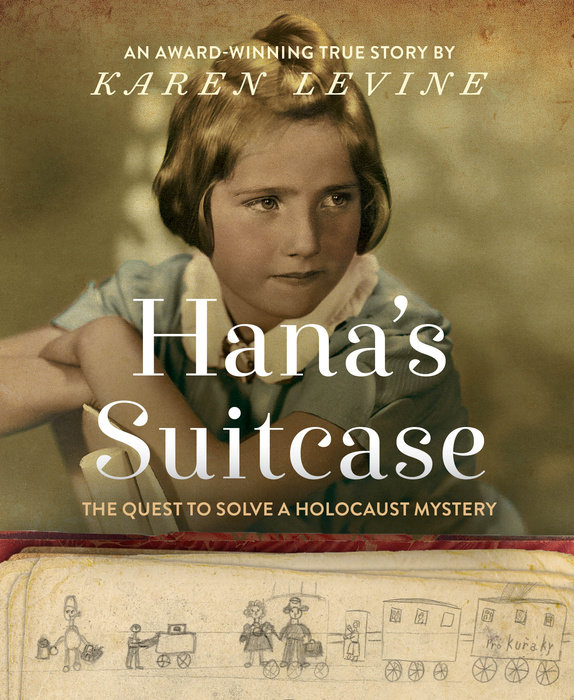Hana's Suitcase
This award-winning true Holocaust story, newly updated, connects generations through one woman’s quest to find the truth behind a mysterious suitcase.
In March 2000, Fumiko Ishioka, the curator of a small Holocaust education center in Tokyo, received an empty suitcase from the museum at Auschwitz. On the outside, in white paint, were the words “Hana Brady, May 16, 1931, Orphan.”
Fumiko and the children at the center were determined to find out who Hana was and what happened to her all those years ago, leading them to a startling and emotional discovery.
The dual narrative intertwines Fumiko’s international journey to find the truth about Hana Brady’s fate with Hana’s own compelling story of her life in a quiet Czech town, which is shattered by the arrival of the Nazis, tearing apart the family she loves. This suspense-filled work of investigative nonfiction draws in young readers and makes them active participants in the search for Hana’s identity.
Praise for Hana’s Suitcase
• “Hana wanted to become a teacher, and surely through this little book her dream is being realized.” —Archbishop Desmond Tutu, from his new foreword to Hana’s Suitcase
• “The account . . . is part history, part suspenseful mystery . . . with an incredible climactic revelation.” —Booklist
An Excerpt fromHana's Suitcase
Tokyo, Japan, Winter 2000
Really, it’s a very ordinary-looking suitcase. A little tattered around the edges, but in good condition.
It’s brown. It’s big. You could fit quite a lot in it--clothes for a long trip, maybe. Books, games, treasures, toys. But there is nothing inside it now.
Every day children come to a little museum in Tokyo, Japan, to see this suitcase. It sits in a glass cabinet. And through the glass you can see that there is writing on the suitcase. In white paint, across the front, there is a girl’s name: Hana Brady. A date of birth: May 16, 1931. And one other word: Waisenkind. That’s the German word for orphan.
The Japanese children know that the suitcase came from Auschwitz, a concentration camp where millions of people suffered and died during the Second World War between 1939 and 1945. But who was Hana Brady? Where did she come from? Where was she traveling to? What did she pack? How did she become an orphan? What kind of girl was she and what happened to her?
The children are full of questions. So is the director of the museum, a slender young woman with long black hair named Fumiko Ishioka.
Fumiko and the children gently take the suitcase out of the glass case and open it. They search theside pockets. Maybe Hana left something that would be a clue. Nothing. Theylook under the polka-dot lining. There are no hints there either.
Fumiko promises the children to do everything she can to find out about the girl who owned the suitcase, to solve the mystery. And for the next year, she becomes a detective, scouring the world for clues to the story of Hana Brady.


